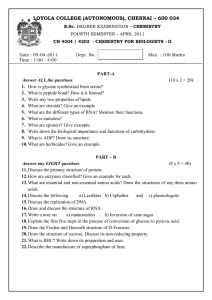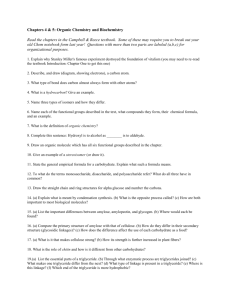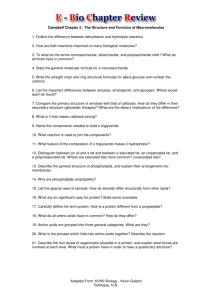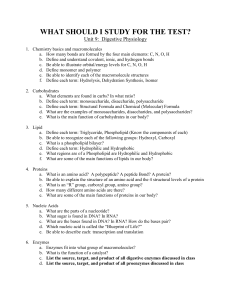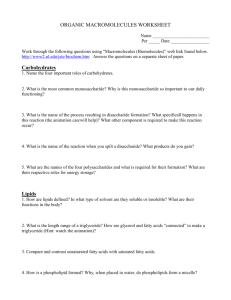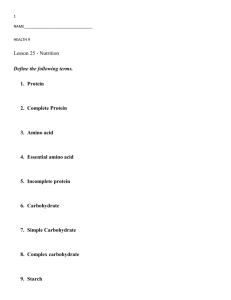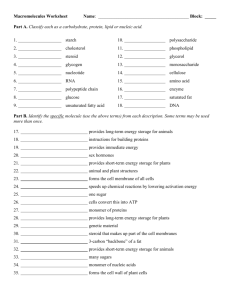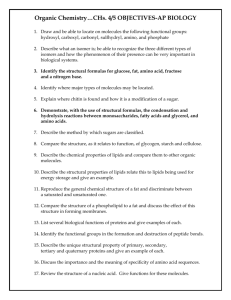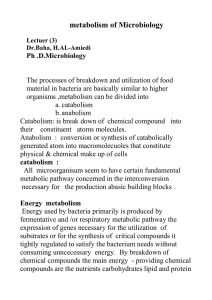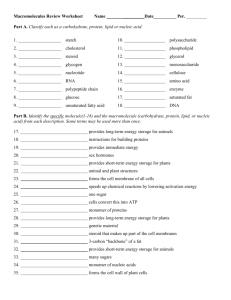Biochemistry Unit
advertisement
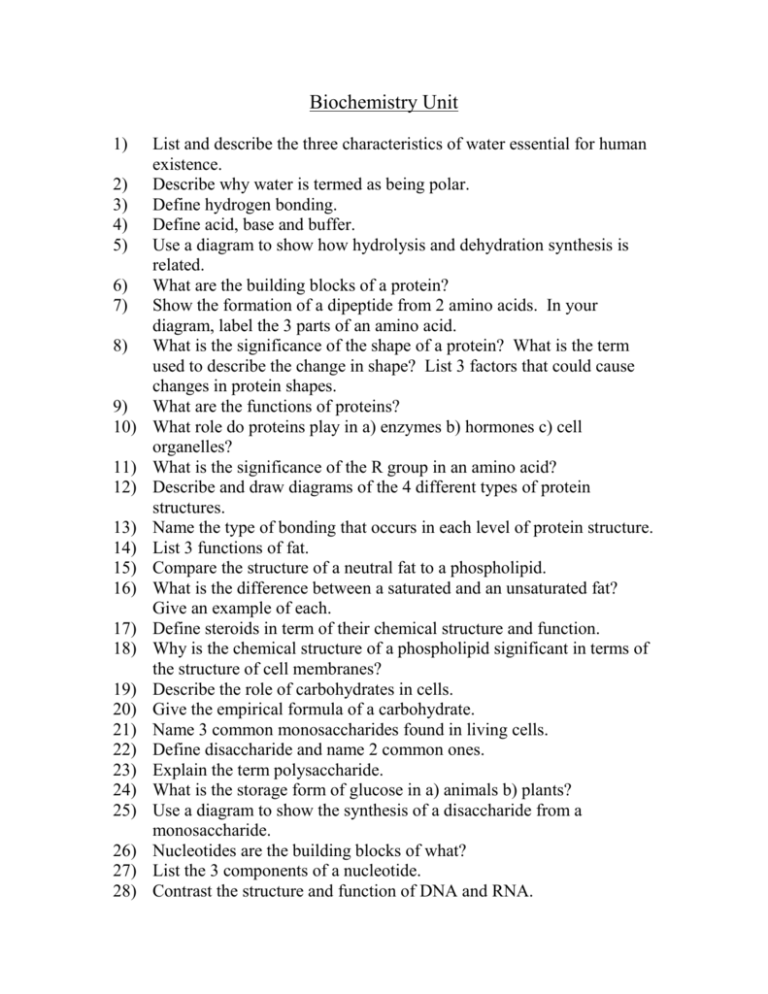
Biochemistry Unit 1) 2) 3) 4) 5) 6) 7) 8) 9) 10) 11) 12) 13) 14) 15) 16) 17) 18) 19) 20) 21) 22) 23) 24) 25) 26) 27) 28) List and describe the three characteristics of water essential for human existence. Describe why water is termed as being polar. Define hydrogen bonding. Define acid, base and buffer. Use a diagram to show how hydrolysis and dehydration synthesis is related. What are the building blocks of a protein? Show the formation of a dipeptide from 2 amino acids. In your diagram, label the 3 parts of an amino acid. What is the significance of the shape of a protein? What is the term used to describe the change in shape? List 3 factors that could cause changes in protein shapes. What are the functions of proteins? What role do proteins play in a) enzymes b) hormones c) cell organelles? What is the significance of the R group in an amino acid? Describe and draw diagrams of the 4 different types of protein structures. Name the type of bonding that occurs in each level of protein structure. List 3 functions of fat. Compare the structure of a neutral fat to a phospholipid. What is the difference between a saturated and an unsaturated fat? Give an example of each. Define steroids in term of their chemical structure and function. Why is the chemical structure of a phospholipid significant in terms of the structure of cell membranes? Describe the role of carbohydrates in cells. Give the empirical formula of a carbohydrate. Name 3 common monosaccharides found in living cells. Define disaccharide and name 2 common ones. Explain the term polysaccharide. What is the storage form of glucose in a) animals b) plants? Use a diagram to show the synthesis of a disaccharide from a monosaccharide. Nucleotides are the building blocks of what? List the 3 components of a nucleotide. Contrast the structure and function of DNA and RNA. 29) Where are DNA and RNA found within the cell? 30) Create a diagram of ATP. 31) Where is ATP synthesized in the cell?
